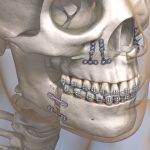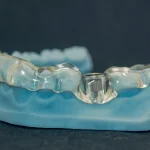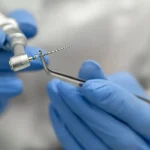
One of the fundamental requisites for the clinical success of dental surgery lies in the prevention of infective complications. Preventive antibiotic treatment or the administration of antibiotics is a method of lowering the bacterial load which may colonise the site treated.
This is nevertheless a pharmacological treatment, which therefore presents specific indications – it is not strictly necessary in all cases, but should be carefully considered depending on the condition of the patient and on the type of treatment – and it can lead to certain complications.
One aspect that is however universally recommended, because it entails no particular discomfort for the operator, for whom it becomes a simple operating algorithm, nor for the patient, who only needs to follow some simple instructions received, is the retention of hygiene and sterility throughout the procedure.
Different protocols
In dental practices, there is usually a distinction between clean and sterile surgery. In actual fact, in the absolute sense, dental surgeries can be catalogued as contaminated clean procedures, since the work space – in this case the oral cavity – cannot be considered sterile in any condition, but it is still affected in a controlled manner without further contamination. More than the surgery itself, therefore, it is the operating protocol that is defined as clean or sterile, depending on the preparation of the patient, of the operators and of the space.
Sterile protocol
In the case of a sterile protocol, the preparation of the patient and of the operators is carried out outside the room, which has previously been cleaned and disinfected with specific products. The protocol envisages two operators who follow a washing procedure:
- wearing suitable clothing, wearing dedicated shoe covers, a mask, a hair cap
- proceeding with hand washing (from the tips of their fingers up to their elbows) with a soapy solution before and with a povidone iodine solution after, then drying with sterile towels
- wearing a sterile gown, then sterile gloves, without ever touching the external surfaces
The presence of a non-sterile operator is necessary, to assist the first two in putting on their gowns and proceeding with unwrapping the sterile material. Once unwrapped, the material should be handled by a third sterile person, the scrub nurse.
Clean protocol
Clean preparation does not require the presence of four, but rather three people and is therefore more useful in dental practices, compared to sterile preparation. This does not mean that it constitutes a simplified version, but simply an alternative with different instructions.
The hand washing process is identical, considering that the use of sterile gloves is equally envisaged, but the gown used will be disposable and not sterile. The amount of instruments is normally reduced and therefore the use of a smaller quantity (even reduced to one) of sterile sheets will be required. The tasks of the third person do not feature substantial variations.
In both cases, once in the room, the patient is prepared by cleaning the perioral skin using the same povidone iodine solution and subsequent isolation with adhesive sheets.
Do you want more information on Zhermack Dental products and solutions?
Contact us




 Zhermack SpA has been one of the most important producers and international distributors of alginates, gypsums and silicone compounds for the dental sector for over 40 years. It has also developed solutions for the industrial and wellbeing sectors.
Zhermack SpA - Via Bovazecchino, 100 - 45021 Badia Polesine (RO), Italy.
Zhermack SpA has been one of the most important producers and international distributors of alginates, gypsums and silicone compounds for the dental sector for over 40 years. It has also developed solutions for the industrial and wellbeing sectors.
Zhermack SpA - Via Bovazecchino, 100 - 45021 Badia Polesine (RO), Italy.


